Ever noticed a lot of gardeners talking about zones, and zone hardiness? Are you wondering what growth, climate, or hardiness zones mean for your plants? How do they pertain to the success of your gardening adventures?
Hardiness Zones or Growth Zones are sections of North America divided into eleven growth zones. Each zone is 10 degrees Fahrenheit cooler or warmer than the next area. Zone 6 is the hardiness zone we will be talking about today. Average minimum temperatures determine the zone; the temperature can, however, fall outside of the range of temps. It is the lows of the winter in that area that determines an area's climate zone.
Characteristics of Zone 6
Zone 6 is divided into three subzones, 6, 6a, and 6b.
Hardiness zone 6 has an average minimum temperature of -10 to 0 degrees Fahrenheit. Hardiness zone 6a has an average minimum temperature of -10 to -5 degrees Fahrenheit. Hardiness zone 6b has an average minimum temperature of -5 to 0 degrees Fahrenheit.
In Zone 6's the first frost-free date is May 15 and its first frost date is October 15.
Zone 6 is considered to be a medium-length growing zone. Most vegetable garden plants and shrubs will do just fine in this zone. Lots of plant and seed companies will even research for you, including the zone hardiness for each plant in the description or specs of the plant.
Planting time frames for cold-hardy plants in Zone 6 usually start in mid-March, and April. Early May you can start to plant your seeds, and set plants outside after the last frost date for your zone. Subsequently, gardening in zone 6 is exceptionally gratifying because many plants do well in this climate zone. As a rule, all of the zone 6 states experience four distinct seasons. The exceptions to this rule are Calfornia, Nevada, and Arizona.
Looking for low maintenance evergreen shrubs? Get them here.
Plants that grow in the shade - in Zone 6
Now that you know a lot about this zone, let's find some shade shrubs that will be hardy in zone 6.
1. Blue Enchantress Hydrangea

Hydrangea macrophylla ‘Monmar’ is this shrubs Latin name, it is hardy in zones 5-9. Growing 3-5 ft high, and the same in width this re-growing, mounding hydrangea will fill your shade garden with brilliance. Regrowing hydrangea means that the stems that grow this year will hold the blooming flowers for next year. So, don't prune a regrowing hydrangea.
This shrub loves the partial shade and moist but well-drained soils. Blue Enchantress hydrangeas thrive best with regular watering and fertilizing.
2. Service Berry

Amelanchier species or serviceberry is hardy in Zones 2 to 9. Don't let its drab name fool you. This shrub requires little pruning, and because of its low maintenance profile, it is a garden favorite. This shrub grows eight to twenty feet, sometimes more, and 4 to 15 feet wide. It will take all types of light, except deep shade. Serviceberry is also drought tolerant and will give beautiful fall foliage.
3. Kousa Dogwood (Japanese Dogwood)

Its Latin alias or species is Cornus, and it is hardy in Zones 2 to 8. These multi-stemmed flowering shrubs add dramatic flair to your garden, along with the lovely shade. They have white flowers in May that change moving to June they advance to pink, giving way to brilliant purple and Scarlett fall leaves.
These shrubs grow fifteen to twenty-five feet tall and spread their width to twenty-five feet. Sustaining a medium growth rate, it prefers full sun or partial shade and does okay in most soils.
4. Virginia Sweetspire
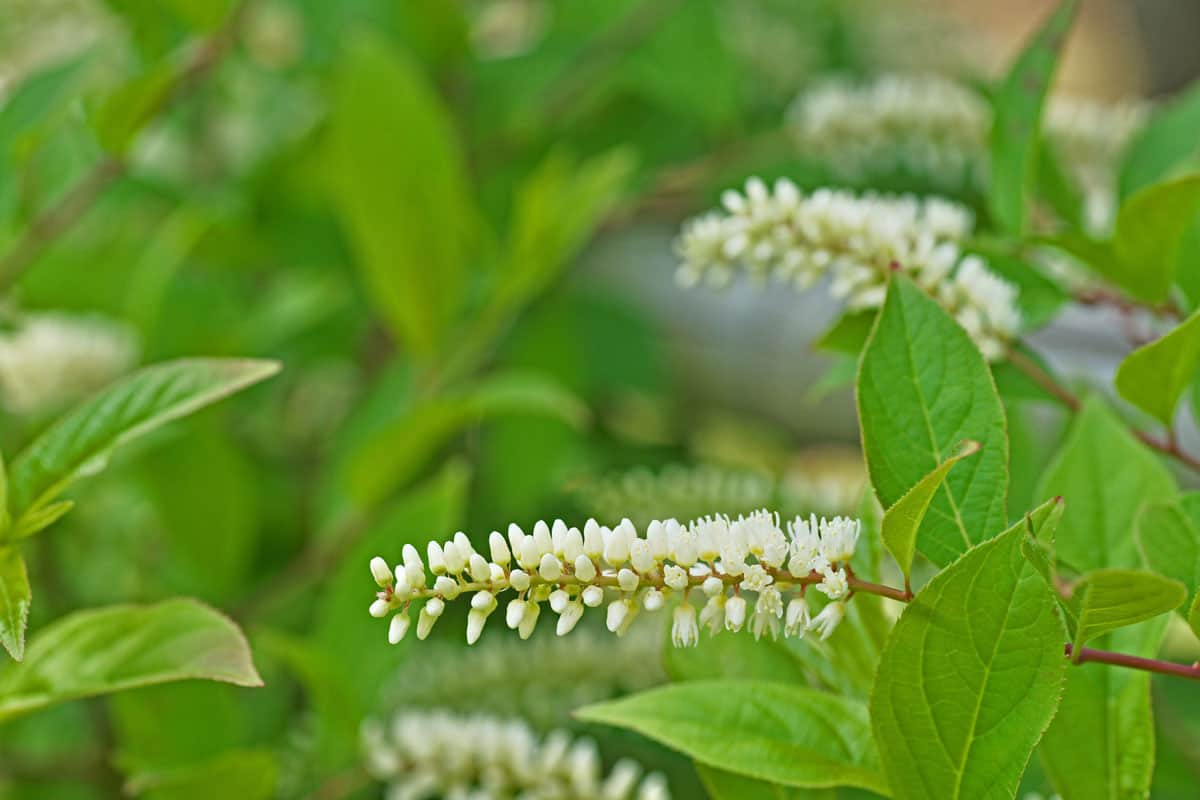
Virginia Sweetspire or Itea Virginica is hardy in Zones 5 to 9. It grows 3-5 feet tall; this plant spreads by suckering, especially in moist areas. This plant will grow well in the sun or shade and is a useful resource to deal with erosion. There are few insect pests or diseases that affect this plant. It makes a great plant to fill in or for starting after a burn-off.
5. Red Chokeberry
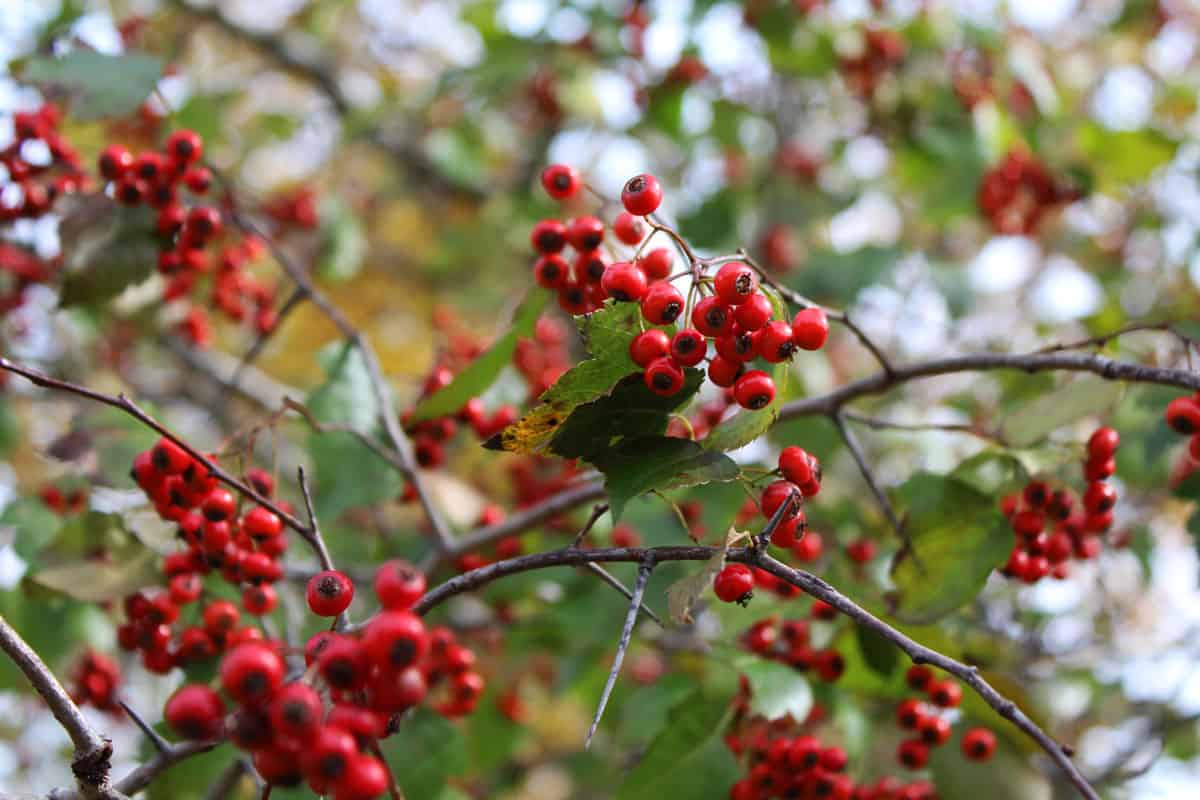
Aronia arbutifolia or Red Chokeberry grows best in full sun to partial shade. It is hardy in zone4-9. Prune this plant in spring after it is done flowering. This deciduous plant has a slow growth rate, prefers wet sites, and has lovely white flowers. It will grow six to eight feet tall.
It is suggested to mulch around this shrub to preserve water near its roots. Settling this lovely plant in your landscape will attract butterflies and birds.
6. Shrubby St. John's Wort
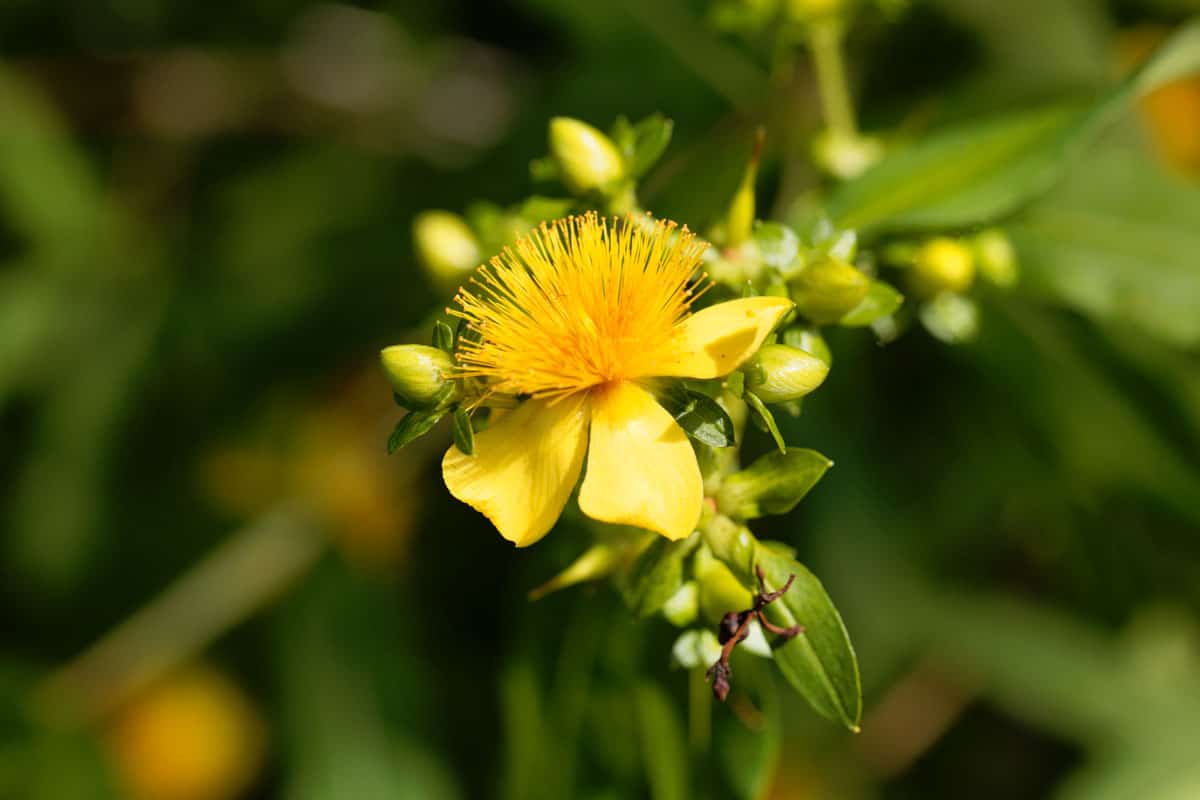
Hypericum prolificum better is known as Shrubby St John's Wort. This shrub is hardy in zones 4-8, likes full to partial sun, and moist to slightly dry soils. It grows to a height of five feet and needs three-four feet of space.
It blooms from July to September and has the advantages of being deer resistant, bee-friendly, and perfect for home landscaping. Just be aware it is toxic for dogs, but not toxic to humans.
Upgrade your garden with these garden path ideas!
7. Bottle Brush Buckeye

Aesculus parviflora also is known as Bottle Brush Buckeye and is hardy in zone 4-8. This deciduous, mounding plant grows 6-12 feet tall.
Looking similar to a chandelier, this plant shoots spikes of circular plumy flowers towards the sky. This species is an excellent choice for borders. Bottle Brush likes partial shade and well-drained soils. It will attract hummingbirds, and butterflies, however, the seeds and foliage are poisonous to humans.
8. Japanese Kerria
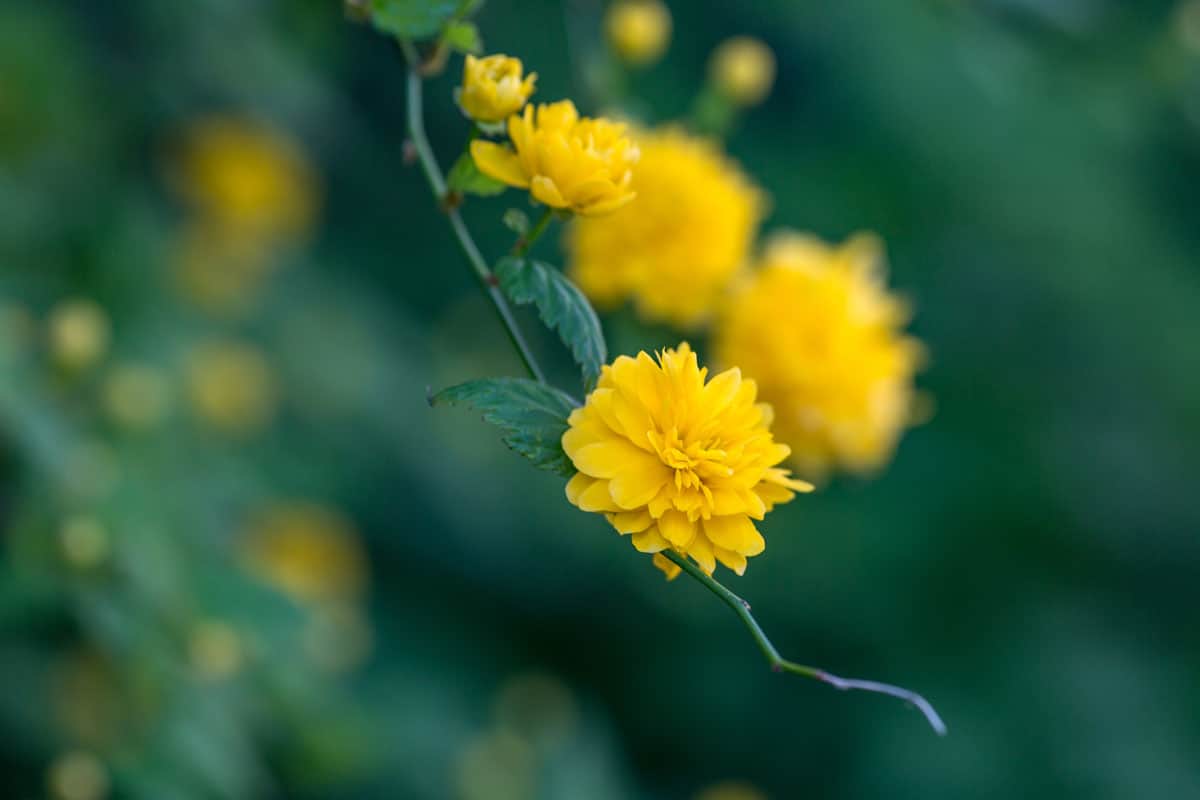
Kerria japonica. or Japanese Kerria is a shrub that grows four to six feet tall. Hardy in zones 4-9 and growing in partial shade to full sun; this plant will bring brilliant color to your garden. It is a deciduous plant that has bright yellow flowers. While it prefers moist well-drained soil, it also prefers alkaline or clay soils. It has a moderate growth rate and will attract butterflies and hummingbirds.
9. Rhododendron

Rhododendron, as their species name goes, are well known, and they are hardy in zones 5-8. The size of growth depends on the variety and can be as little as eighteen inches tall to twenty feet by twenty feet. These plants do best in partial shade to filtered light. They thrive in moist well-drained soil; typically Rhododendrons are pruned after they bloom.
10. Mountain Laurel
Kalmia latifolia or mountain laurel is a relative of rhododendrons that blooms in late spring and early summer. Hardy in zones 5-9, it will tolerate deep shade to partial sun but thrives best in the moderate shade to partial shade range.
This is a slow-growing plant that averages six to fifteen feet tall assuming it isn't a dwarf variety. All parts of Mountain Laurel are poisonous if ingested, so use in landscaping that isn't frequented by children.
Find the best garden edging that will suit these beautiful shrubs!
11. Holly
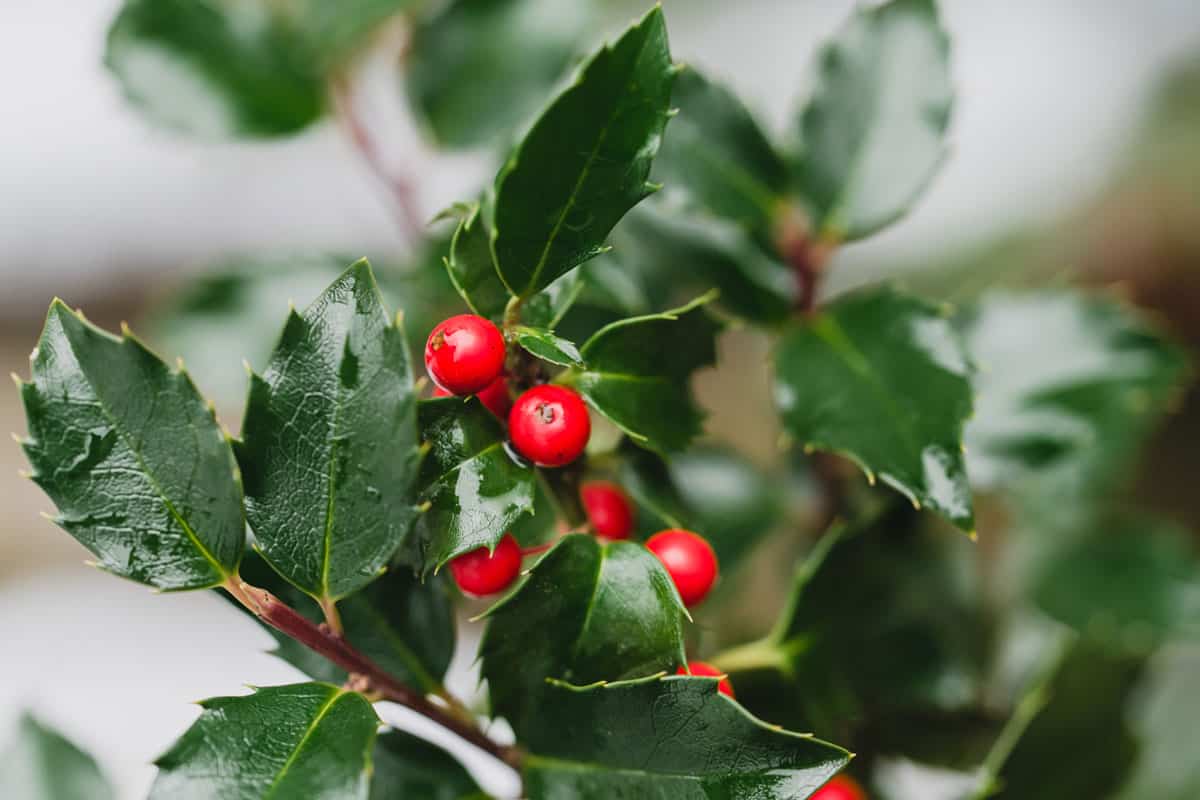
Ilex vomitoria is a species of Holly bush hardy in zones 7-9. Holly prefers slightly acidic, well-drained soils. It is an evergreen, and low maintenance, forgiving shrub.
To get those trademark red berries, you need a male and female holly bush growing in the same area. Depending on the size and shape of the variety you may need anywhere from five to twenty-five feet of space.
Plant Away and Appreciate the Wildlife
Incorporate shrubs that will brighten, beautify, and add interest to your shaded landscape and bring delightfully fun to watch wildlife to your garden, like hummingbirds, butterflies, bees, and birds. Adding shade-loving shrubs to your garden will make it just the space to fulfill all your landscaping desires.
Cluttered tools? Here's 17+ Outdoor storage solutions that might help you!
Enjoyed this post? Pin the image below to save it for later, or share it with your followers!


I got the hydrangia and it’s not blue like I expected…is there some amendment to the soil that effects the color? I love the blue one so much, but its n uninteresting shade of pink…
@Elizabeth Cardarelli, I believe there are spikes you can put in the ground at the base of the plant to reach the purple color. They like acidic soil so be sure to use something for acid loving plants (Miracle Grow has an option called Miracid). Prob best to ask a nursery for details-I’m no expert!
@Elizabeth Cardarelli, try Aluminum Sulfate, I know Espoma makes products exactly for this. Increasing the acidity of your soil can turn hydrangea blooms blue, and decreasing can turn them pink.